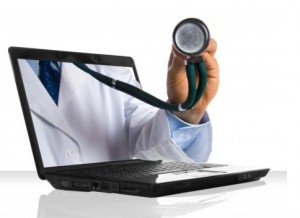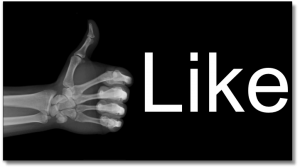Social Media in Healthcare
Tara Baboushkin | @TaraBaboushkin Seems almost an oxymoron, doesn’t it? How can health be social? Facebook, that’s how. And Twitter, and YouTube, and LinkedIn, and Google+, and... You get the picture.
Heralded as the most important development in communications since Gutenberg invented the printing press in 1440, social media has revolutionized the landscape of virtually every industry, and the field of medicine is no exception. More and more health care organizations and professionals are turning to online platforms as a means to grow their business, manage their brand and facilitate professional collaboration.
More importantly, however, is the impact of social media on patient care. Where once you had to sit by the phone for an hour, redialing the busy number over and over and over just to speak with the receptionist, now patients can email, tweet or text their health care provider in an instant to book an appointment or even ask a treatment question.
Social media is not simply socializing health care, it’s personalizing health care by breaking down the wall between the waiting room and the examining room, putting patients’ health into their own hands – literally – and engaging them in their own health care.
One of the pioneering foundations in this movement has been the renowned Mayo Clinic, which founded the first-of-its-kind Mayo Clinic Center for Social Media (MCCSM) in 2005, one year before Twitter was even born. Today, the Mayo Clinic has 386,919 Facebook fans, 531,531 Twitter followers and the most popular medical provider channel on YouTube, with 9,811 subscribers and videos on such topics as Crohn’s Disease and Erectile Dysfunction, as well as touching patient stories.
Less than two years ago, the organization launched Spanish Facebook and Twitter sites in order to target their Spanish-speaking patient population, which accounts for about 30 percent of their international patient base. Today, Mayo Clinic en español has 3,764 fans and @ClinicaMayo has 7,333 followers and just hosted its first Spanish Twitter chat featuring experts from the Mayo Clinic.
The Mayo Clinic has also been a forerunner in hospital blogging with its news blog, podcast blog and Sharing Mayo Clinic blog, which provides a forum for patients and staff to share their personal experiences. The Clinic even has an internal blog which is used to encourage employees to discuss the organization's strategic plan, and also puts out a hybrid "insider" newsletter. It comes as no surprise, therefore, that Mayo Clinic was listed as one of Fortune magazine's "Best Places to Work."
While the benefits of applying social media in health care are indisputable, like all things Internet, it is not without its challenges, including the risk of privacy and security breaches. There are also ethical questions to consider, as social media blurs the lines between the professional and social realms. The relationship between doctor and patient is a delicate one, and despite the informal and intimate nature of the social media world, the confidentiality, trust and wellbeing of the patient must not be compromised.
Health care organizations and professionals must also be cognizant of the fact that the Internet is both pervasive and precarious; the information they share is accessible to millions of users and online postings they make today could have consequences for their professional lives in the future.
Despite these challenges, however, the advantages of social media far outweigh the risks, and this medium is quickly becoming a mainstay of health care management, development and collaboration. With the enormous accessibility that the Internet provides, patients are thirstier for information than ever; social media enables not only the exchange of information, but also the human connection that is so crucial to successful health care but that has been lacking for so long. What could be healthier than that?


